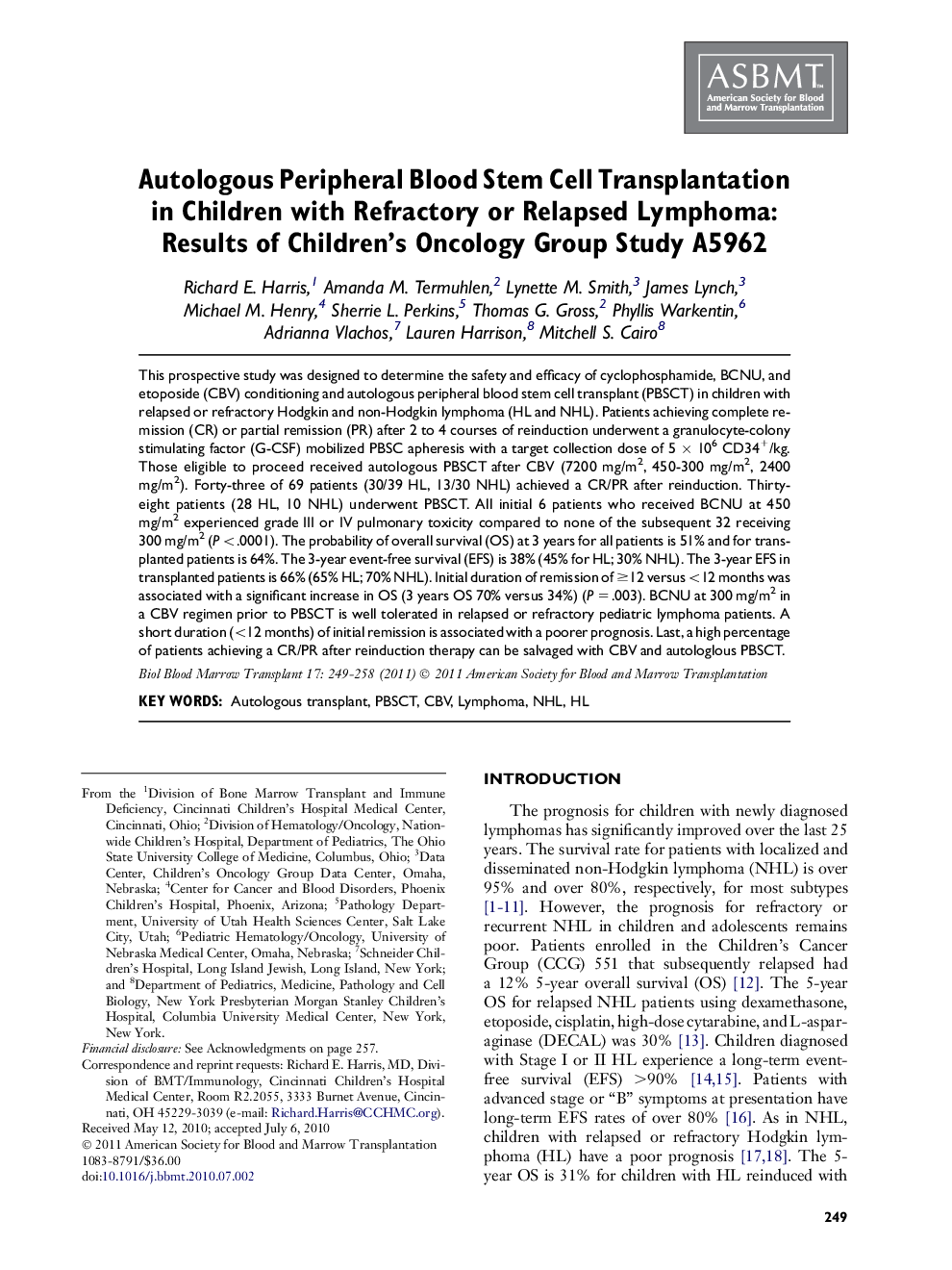| Article ID | Journal | Published Year | Pages | File Type |
|---|---|---|---|---|
| 2103250 | Biology of Blood and Marrow Transplantation | 2011 | 10 Pages |
This prospective study was designed to determine the safety and efficacy of cyclophosphamide, BCNU, and etoposide (CBV) conditioning and autologous peripheral blood stem cell transplant (PBSCT) in children with relapsed or refractory Hodgkin and non-Hodgkin lymphoma (HL and NHL). Patients achieving complete remission (CR) or partial remission (PR) after 2 to 4 courses of reinduction underwent a granulocyte-colony stimulating factor (G-CSF) mobilized PBSC apheresis with a target collection dose of 5 × 106 CD34+/kg. Those eligible to proceed received autologous PBSCT after CBV (7200 mg/m2, 450-300 mg/m2, 2400 mg/m2). Forty-three of 69 patients (30/39 HL, 13/30 NHL) achieved a CR/PR after reinduction. Thirty-eight patients (28 HL, 10 NHL) underwent PBSCT. All initial 6 patients who received BCNU at 450 mg/m2 experienced grade III or IV pulmonary toxicity compared to none of the subsequent 32 receiving 300 mg/m2 (P < .0001). The probability of overall survival (OS) at 3 years for all patients is 51% and for transplanted patients is 64%. The 3-year event-free survival (EFS) is 38% (45% for HL; 30% NHL). The 3-year EFS in transplanted patients is 66% (65% HL; 70% NHL). Initial duration of remission of ≥12 versus <12 months was associated with a significant increase in OS (3 years OS 70% versus 34%) (P = .003). BCNU at 300 mg/m2 in a CBV regimen prior to PBSCT is well tolerated in relapsed or refractory pediatric lymphoma patients. A short duration (<12 months) of initial remission is associated with a poorer prognosis. Last, a high percentage of patients achieving a CR/PR after reinduction therapy can be salvaged with CBV and autologlous PBSCT.
